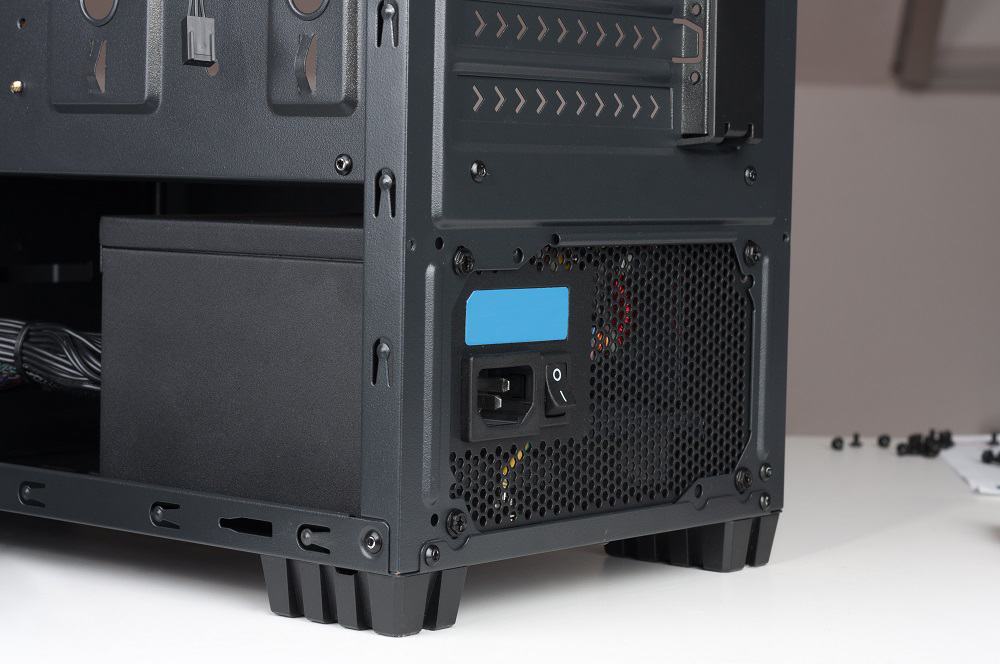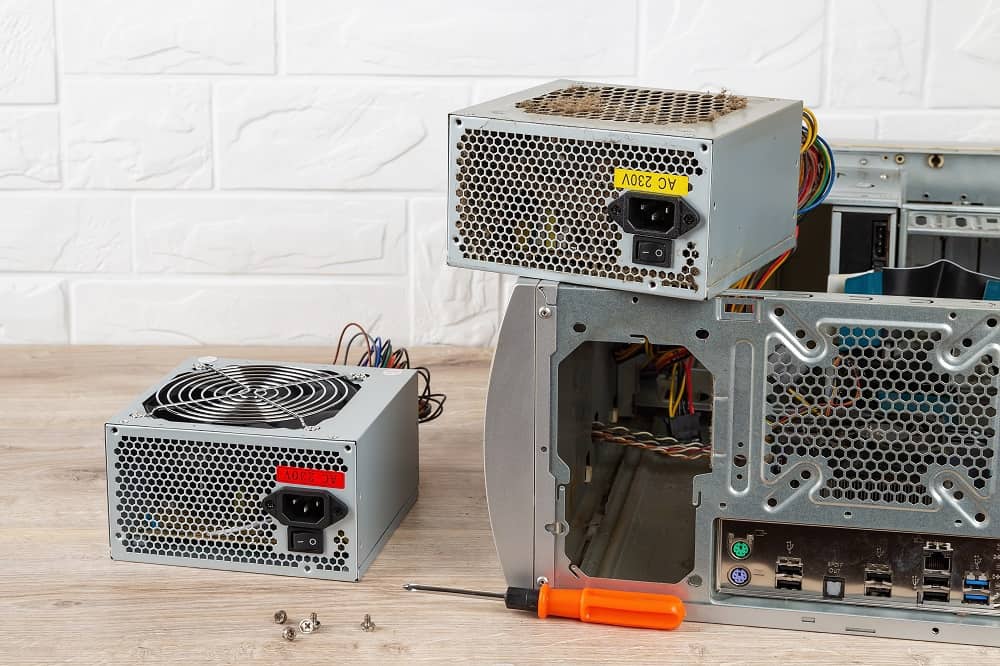The choice between installing the power supply unit (PSU) fan up or down might seem simple, but in reality, it isn’t as straightforward as you might think. With the power unit generating excess heat that can damage the circuit, it is critical that the fan assumes a position where it can dissipate as much heat as possible. To achieve proper cooling, the forced air created by the fan and the direction of airflow should be top of your mind when choosing the direction of installation.
For the best experience and to retain the functional integrity of the PSU, you need to consider the case design, the power supply unit, and the interaction of airflow produced by other fans in the computer.
Case Layout Importance
Computer cases come in different shapes, sizes, and importantly for PSU cooling, different layouts. While most modern cases have a bottom-mounted PSU layout, we still have PC cases that are top-mounted. Furthermore, there are design differences in bottom-mounted PSU layouts.
As such, mounting the fan facing upwards or downwards is highly dependent on the layout of your case.
Bottom Mounted PSU Case Layouts

Cases With Bottom Vents – A bottom-mounted PSU layout with bottom vents is the most common layout for modern PC cases. When working with such a case, you can install the PSU fan facing up or down. A downward-facing fan will intake fresh air from the bottom through dust filters and expel hot air from the rear.
You can still install the fan facing upwards, especially if you plan to place the PC on a surface that curtails the fan’s ability for intake, such as a carpet. Installing the fan facing upwards also negates the fan inlet's chances of ingesting the hot exhaust air, as happens when the inlet is facing downwards.
Placing the fan facing upwards effectively adds another exhaust fan. However, you’ll have to contend with compromised heat dissipation as the air passing through the PSU will already be hot. As such, you have to expand the intake vents to account for the extra intake.
Cases Without Bottom Vents – In the rare event you are working with a case that does not have a bottom vent, you should install the fan facing upwards. In fact, there is no other way to install the fan in such cases.
Cases With PSU Shrouds – Some high-end PC cases have a PSU shroud designed to protect the power supply unit as well as the bottom-mounted drives. When your PC case has an all mental shroud, you should install the fan facing down. The fan will draw air from the bottom and exhaust hot air from the rear, just like cases without PSU shrouds.
Cases With PSU Shrouds With Top Vents – There are cases with vents atop of the shroud. With the vented shroud, you can house the fan facing upwards or downwards. However, installing the fan facing down when the case has a filtered vent at the bottom of the case is recommended.
Top Mounted PSU Case Layout

Top-mounted PSU cases are a rare accessory in the current times. They are usually a preserve of budget cases, mini-tower cases, and some OEM cases. Generally, cases with a top-mounted PSU layout require you to install the fan facing down. The PSU fan will draw the warm air from inside the case and exhaust it.
However, if the case you are working with has a top vent (which is extremely rare), you can install the fan facing up. The top vent allows the fan to draw cool air from the outside, thereby providing better cooling and more efficient airflow, improving the durability of the PSU. The only caution you should take is to ensure you have a 5 cm gap between the fan and the casing.
PSU Airflow And Negative Pressure Explained
PSU fans usually affect the overall airflow when they are installed facing upwards. This is because installing the fan facing upwards is akin to adding another exhaust fan, which interacts with the overall airflow in the case. When installed facing down, the PSU fan creates somewhat of a closed environment with its own airflow that does not interact with the rest of the airflow in the case.
If you opt to install the PSU fan facing up, it is critical that you balance the airflow to negate negative pressure from arising. This is especially important if you open up the air inlets or increase the inlet fan speed on account of an added PSU exhaust.
Negative pressure arises when there is less air going in through the vents and into the case than coming out of the exhaust. The negative pressure in the case allows air to be drawn in through crevasses and cracks, which allows dust to infiltrate your PC.
In case the PSU fan spins too fast and creates negative pressure, use fan controllers to balance the airflow. You can increase the intake fan speed or lower the speed of exhaust fans to create a neutral or positive pressure inside the case.
Number of Exhaust Fans and Neutral Pressure
In a build where the case has one or two exhaust fans, the best mounting solution for PSU fans is to face it upwards. In doing this, you add more exhaust to the case, which enhances the overall cooling capacity. Moreover, you can create neutral pressure inside the case, which reduces dust intake while keeping fan noise down.
Placement of The Case (Is it on the carpet, on a desk, wood floor?)
You need to consider the placement of your PC. Ideally, you should place the PC on a surface that does not choke any of the inlet vents, such as wooden floors or desks. For instance, if you intend to place the PC on a carpeted surface, the golden standard is to install the PSU fan facing upwards. Installing the fan facing downwards on a carpet will choke the fan, which will result in inefficient cooling.
Water Cooling and Leaks
If you have water cooling in your setup, the best solution is always to install the fan facing downwards. The risk of dripping coolant or shorting the power supply unit is extremely high when the fan faces upwards. This is especially common in cases that do not have a shrouded PSU mount.
Conclusion
The choice between installing the fan facing up or down must be a deliberate calculation designed to aid cooling of the PSU without incurring any negative side effects. To this end, whether you install the PSU fan facing up or down, ensure you do not create negative pressure inside the case.

